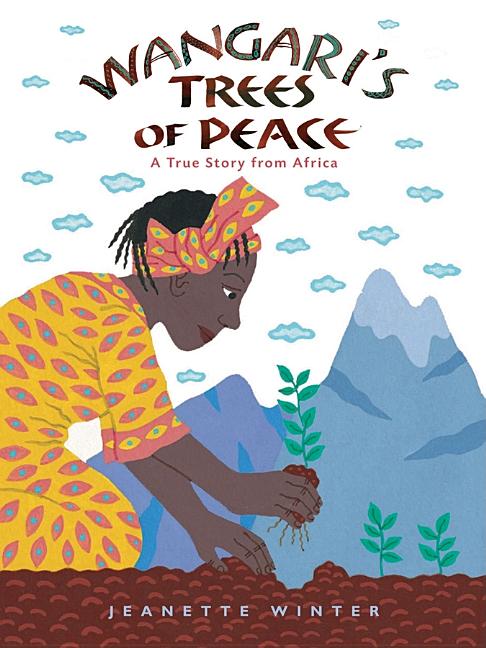Book Descriptions
for Wangari's Trees of Peace by Jeanette Winter
From Cooperative Children's Book Center (CCBC)
From The United States Board on Books for Young People (USBBY)
When she was small, Wangari Maathai gathered wood, watching the birds in the forests. When she returned to Kenya from school, the trees and birds had vanished. “I can begin to replace some of the lost trees here in my own backyard—one tree at a time,” (n.p.) became her mantra. Wangari Maathai began the Green Belt Movement and planted a tree—the African symbol of peace—when she learned she had won the Nobel Peace Prize. Her life has inspired a number of books in recent years, including Mama Miti (Napoli) and Planting the Trees of Kenya (Nivola), both reviewed here. 2009 Notable Social Studies Trade Books for Young People, 2009 Outstanding Science Trade Books for Students K–12. lmp
From the Publisher
As a young girl growing up in Kenya, Wangari was surrounded by trees. But years later when she returns home, she is shocked to see whole forests being cut down, and she knows that soon all the trees will be destroyed. So Wangari decides to do something—and starts by planting nine seedlings in her own backyard. And as they grow, so do her plans. . . .
This true story of Wangari Maathai, environmentalist and winner of the Nobel Peace Prize, is a shining example of how one woman’s passion, vision, and determination inspired great change.
Includes an author’s note.
This book was printed on 100% recycled paper with 50% postconsumer waste.


